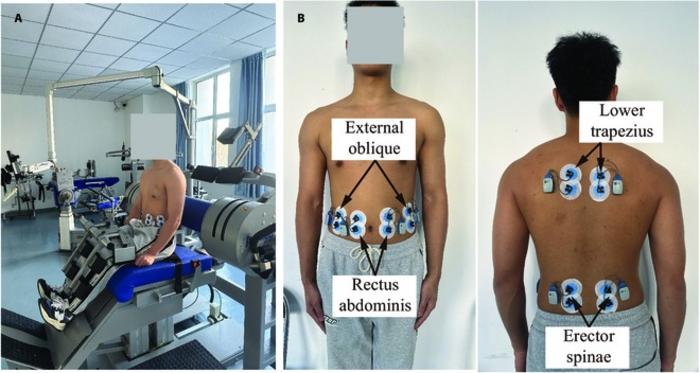Researchers have developed an innovative method for assessing spinal muscle strength, utilizing isokinetic testing combined with advanced spine musculoskeletal modeling. This cutting-edge approach, detailed in a study published by the Cyborg and Bionic Systems journal, marks a significant advancement in personalized health and athletic training.

Credit: Cyborg and Bionic Systems
Researchers have developed an innovative method for assessing spinal muscle strength, utilizing isokinetic testing combined with advanced spine musculoskeletal modeling. This cutting-edge approach, detailed in a study published by the Cyborg and Bionic Systems journal, marks a significant advancement in personalized health and athletic training.
Understanding individual muscle strength is crucial for optimizing physical therapy and enhancing athletic performance. Traditional methods, however, often fall short in precision. The newly introduced technique by Zuming Xiao and colleagues from the Beijing Institute of Technology and Shenyang Sport University bridges this gap by integrating direct muscle strength measurements with dynamic simulations.
The study involved five healthy male volunteers, each undergoing detailed isokinetic testing—an objective method to measure muscle strength at constant movement speeds. This data was then synergized with a digital model of the spine’s musculoskeletal system, meticulously constructed to mirror the human anatomy’s complexities.
One of the key innovations of this research is the incorporation of muscle synergy and intra-abdominal pressure (IAP) in the modeling process. Muscle synergy refers to the cooperative activation of muscle groups, enhancing the model’s accuracy in simulating natural movements. IAP, generated by the abdominal muscles during exertion, plays a significant role in spinal stability, an aspect crucial for both athletes and those undergoing rehabilitation.
The results demonstrated that this integrative approach could identify specific spinal flexor and extensor muscle strengths with unprecedented accuracy. The method’s validity was reinforced through simulations that showed high correlation with actual measured values, proving its potential to transform how muscle strength is assessed and rehabilitated.
For athletes, particularly those in sports requiring significant back strength and flexibility, this method allows for tailored training programs that enhance performance while minimizing injury risks. In rehabilitation, it promises more effective recovery strategies, personalized to individual muscular capabilities and recovery progress.
This breakthrough is a step towards more personalized medicine and training regimens, offering benefits across health care and sports, ensuring individuals not only recover faster but also perform better, backed by a deep understanding of their unique muscular makeup.
The paper, “Muscle Strength Identification Based on Isokinetic Testing and Spine Musculoskeletal Modeling” was published in the journal Cyborg and Bionic Systems on May, 24,2024, at DOI: doi.org/10.34133/cbsystems.0113



